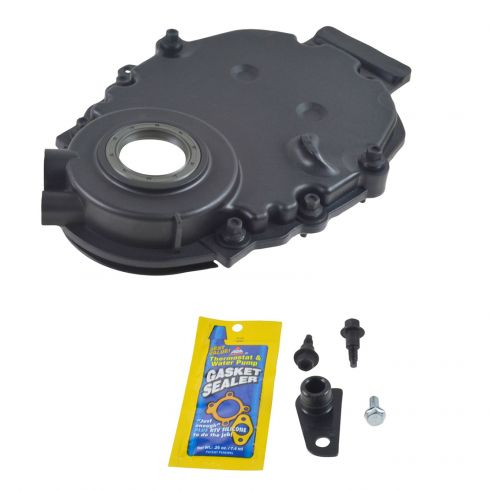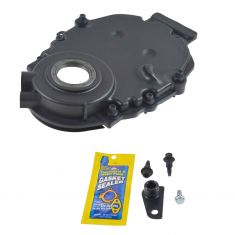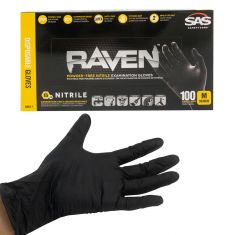1AETC00016-Chevrolet GMC Cadillac Timing Cover Dorman OE Solutions 635-505

Replaces
1999 GMC C3500 Truck V8 5.0L Timing Cover Dorman OE Solutions 635-505

Frequently bought together
Product Reviews
Loading reviews
3.60/ 5.0
5
5 reviews
Timing cover
August 16, 2018
The product was a exact fit, the only problem was the thread insert for crank position sensor hold down was loose in the bore and I had to JB Weld it.
Weak bolts
September 7, 2019
The cover itself is decent quality but the bolts that come with it are junk before they were even at torque 18 foot-pounds i had two of them break on me. i wouldn't suggest using the bolts that come with the cover unless you want to drill out broken bolts from your engine block
Decent product
February 2, 2020
The cover fits perfectly. The bolts are ok. The how to/diy video, however, is wrong. The bolts are only suppose to be torqued to 6.5ft Lbs and not the 18ft Lbs like the video suggests. A previous review stated that the bolts are garbage, but he most likely was fallowing to video like I did and over torqued and snapped the first bolt like I did. So all in all the product is decent, but make sure you do extensive research and get the correct torque specs. before doing this on your own.
September 10, 2020
Fits perfect easy to install
June 2, 2021
Very reasonable price with good quality parts.
Customer Q&A
Does ythis come with cam position sensor??
February 27, 2018
10
No.
February 28, 2018
Keith S
Do you sell the cam position sensor? Doesn't show up in search
February 27, 2021
10
We can check inventory for a camshaft position sensor if you can provide the year, make, model and engine size of your vehicle.
March 1, 2021
Christa R
GMC is a registered trademark of General Motors Company. 1A Auto is not affiliated with or sponsored by GMC or General Motors Company.
See all trademarks.











